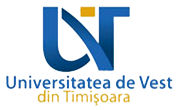Ileana Streinu
Smith College and University of Massachusetts Amherst, US
Title:
Origami design with Lang’s Universal Molecule
Abstract:
Cauchy’s famous rigidity theorem for 3D convex polyhedra has been extended in various directions by Dehn, Weyl, A.D.Alexandrov, Gluck and Connelly. These results imply that a disk-like polyhedral surface with rigid simplicial faces is, generically, flexible, if the boundary has at least 4 vertices. What about surfaces with rigid but not necessarily simplicial faces? A natural, albeit extreme family is given by flat-faced origamis.
Around 1995, Robert Lang, a well-known origamist, proposed a method for designing a crease pattern on a flat piece of paper such that it has an isometric flat-folded realization with an underlying, predetermined metric tree structure. Important mathematical properties of this algorithm remain elusive to this day.
This tutorial introduces Lang’s TreeMaker and Universal Molecule methods and then surveys recent results concerning their properties and algorithmic complexity. Some of these results are joint work with my PhD student John Bowers, who also implemented a very nice program to visualize what is going on.
In particular, I will focus on two questions: (1) is Lang’s crease pattern continuously foldable?, and, since the answer will turn out to be negative, (2) does there always exist a “shape” of the original piece of paper, so that the algorithm produces a pattern guaranteed to be continuously foldable? To answer (1) we showed that, surprisingly, the Universal Molecule method leads, often but not always, to a crease pattern that is simply rigid: the (real) configuration space of such a structure may be disconnected, with one of the components being an isolated point. For (2), I will give a positive answer. It leads to an interesting symbolic algebraic equation with coefficients involving symmetric functions on a set of input parameters.
